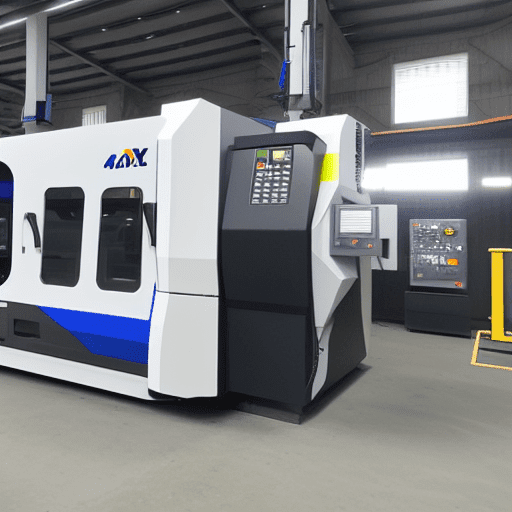A 5-axis CNC machine is a computer numerical control (CNC) machine that uses five axes to move the cutting tool. The cutting tool moves in five different directions — X, Y, and Z, as well as A and B, around which the tool rotates. This allows operators to approach a part from all directions in a single operation, eliminating the need to manually reposition the workpiece between operations. 5-axis CNC machines are used in a variety of industries, including aerospace, automotive, and medical. They are well suited for parts that are symmetrical or have complex geometry.
How much does a 5 axis machine cost?
How much does a 5 axis machine cost? An entry-level 5-axis mill can cost between $200,000 and $500,000. A production 5-axis mill can cost more than $500,000. An entry-level (or toolroom) 2-axis lathe can cost between $30,000 and $60,000. A production 2-axis lathe can cost between $60,000 and $250,000. These prices are based on the type of machine, the brand, the size of the machine, and the features offered. When considering the purchase of a 5 axis machine, it is important to consult with a knowledgeable dealer or distributor to ensure that you are getting the best machine for your needs and budget.
What are the types of 5 axis machines?
There are five types of 5-axis machines: drop swivel head, drop table, double swivel head, double swivel table, and one swing one rotate. The main difference between the types of 5 axis machines is where on the machine the rotational axes appear. For example, on a drop swivel head machine, the rotational axes are on the head, whereas on a drop table machine, the rotational axes are on the table. Similarly, on a double swivel head machine, the rotational axes are on both the head and the table, and on a one swing one rotate machine, the rotational axes are on the swing arm. While there are many different types of 5-axis machines, they all share one common goal: to provide greater flexibility and precision than traditional 3-axis machines.
What are the advantages of 5-axis machining?
One of the main advantages of 5-axis machining is that it allows for the cutting tool to remain tangential to the cutting surface. This results in lower cycle times and costs because more material can be removed with each tool pass. In addition, 5-axis machining also provides better surface finishes on contoured geometry. Because the cutting tool can follow the contours of the material more closely, there is less chance for error and the final product has a smoother finish. Ultimately, 5-axis machining provides many benefits over traditional machining methods, making it an increasingly popular option for manufacturers.
What is the difference between 4-axis and 5-axis CNC?
When it comes to CNC machining, the number of axes refers to the number of directions in which the cutting tool can move. The most common configuration is 3-axis machining, which allows the cutting tool to move along the X-, Y-, and Z-axes. However, more advanced setups like 4-axis and 5-axis machining are also available. As the name suggests, 4-axis machining adds an additional axis of rotation (the A-axis), while 5-axis machining adds two additional axes of rotation (the A- and B-axes). This allows for more complex shapes to be machined, as well as a greater degree of accuracy. However, it should be noted that 5-axis machining is significantly more expensive than 3- or 4-axis machining.
What is the 5th axis called?
The 5th axis of a CNC machine is known as the B axis. This axis allows for rotation around the Y axis, which provides greater flexibility and precision when cutting workpieces. The addition of a 5thaxis can also allow for more complex shapes to be cut, and for more detailed work to be performed. As a result, CNC machines with a 5th axis are typically more expensive than those without one. However, the extra cost may be worth it for those who need the added precision and flexibility that the 5th axis provides.
